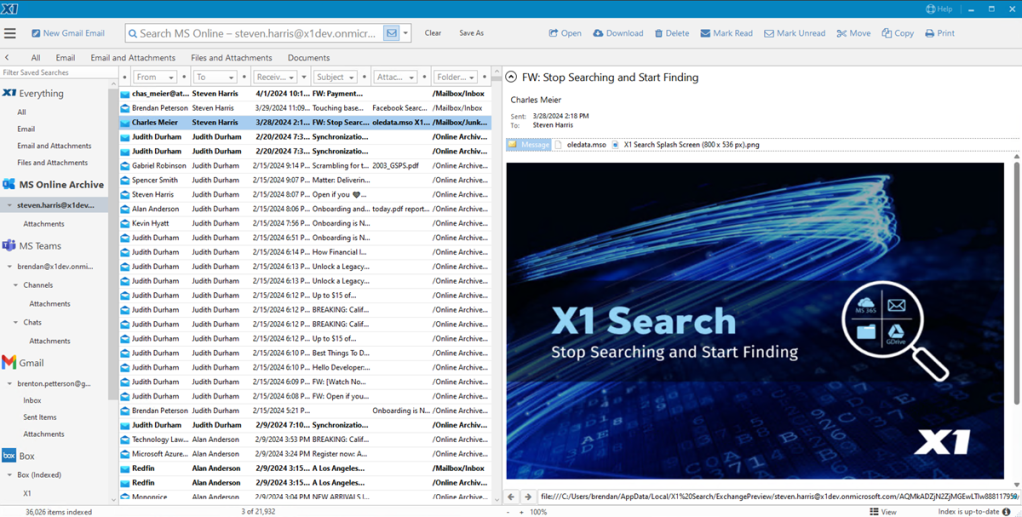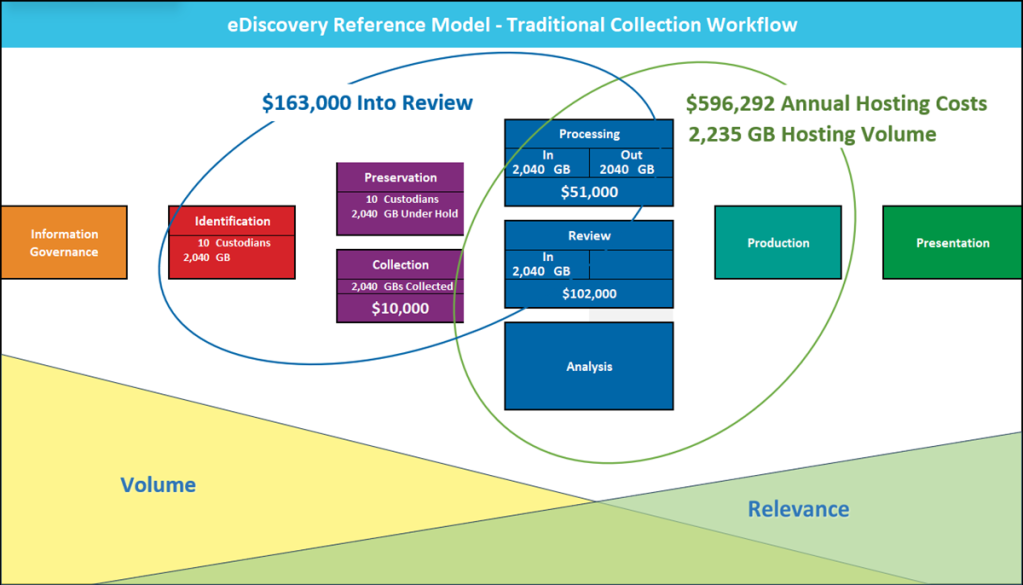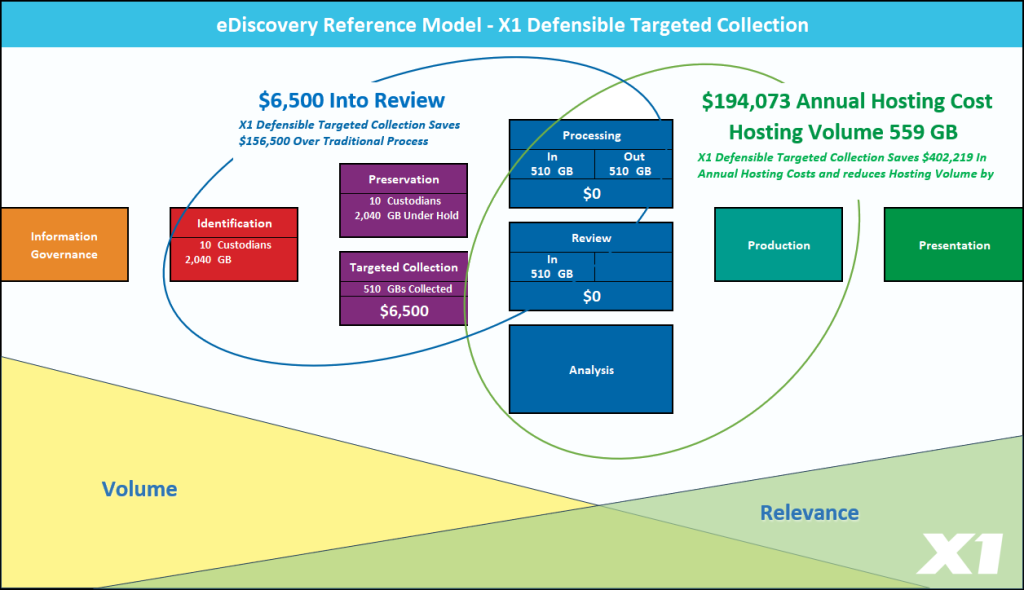By John Patzakis
Proportionality-based eDiscovery is a goal that all in-house corporate legal teams want to attain. Under Federal Rule of Civil Procedure 26(b)(1), parties may discover any non-privileged material that is relevant to any party’s claim or defense and proportional to the needs of the case. However, most core eDiscovery costs (outside of attorney review) stem from over-collection of electronically stored information (ESI), and over-collection thwarts the ability to attain proportionality. Law firm Nelson Mullins notes that “over preservation tends to have its own costs relating to storage of large amounts of electronically stored information (ESI) and the resources needed to manage it; leads to increased downstream e-discovery costs associated with collection, processing, and review.”
This is why accurate pre-collection data insight is a game-changing capability that enables counsel to set reasonable discovery limits and ultimately process, host, review and produce much less ESI. Counsel can further use pre-collection proportionality analysis to gather key information, develop a litigation budget, and better manage litigation deadlines. Such insights can also foster cooperation by informing the parties early in the process about where relevant ESI is located, and what keywords and other search parameters can identify and pinpoint relevant ESI.
And the means to enable this capability is distributed index and search in-place technology. Indexing and search in-place in this context means that a software-based indexing technology is deployed directly onto fileservers, laptops, or in the cloud to address cloud-based data sources. This indexing occurs without a bulk transfer of the data to a central location. Once indexed, the searches are performed in a few seconds, with complex Boolean operators, metadata filters and regular expression searches. The searches can be iterated and repeated without limitation, which is critical for large data sets.
However, with this capability being highly valued, many vendors have parroted this messaging, but have offerings that do not qualify as true index-in-place. True distributed index-in-place means that the search indexes are forward-deployed, and are actually installed on the target laptop, Mac computer, fileserver or into the cloud near where the target cloud data sources exist. Transferring data in bulk to a central appliance or server farm via a collector agent or Robocopy function does not qualify. A true index-in-place capability uniquely enables scalability, targeted collection and also minimizes security and data governance risks in eDiscovery and information governance matters.
Conversely, a process requiring massive data copying, migration and centralization does not scale and creates significant data, governance and privacy issues by needlessly duplicating data. For instance, if a matter requires that 10 terabytes be scanned to determine if relevant ESI exists within that data corpus, and the eDiscovery collection platform being used has no index-in-place capability, then all 10 terabytes must be copied and transferred to the tool for indexing and analysis. These limitations stem from tool vendors simply utilizing open source indexing platforms like Lucene or Elastic Search that are not forward-deployable and must reside in centralized locations with a very large amount of computing resources to make them viable for the type of data and data volumes typically seen in discovery and information governance matters.
This is why X1 leverages proprietary and patented index and search technology that is readily forward deployable and thus can scale and allow true distributed indexing in-place. X1 Enterprise Collect significantly streamlines the eDiscovery workflow with integrated culling and deduplication, thereby eliminating the need for expensive and cumbersome ESI processing tools. That way, the ESI can be populated straight into Relativity from an X1 collection without multiple hand offs, extensive project management and inefficient data processing.
The ability to directly and transparently collect data from custodian laptops, desktops, Microsoft 365 and other cloud sources into a RelativityOne/Relativity workspace is a game-changer that enables attorneys to begin review in hours rather than weeks.
For a demonstration of the X1 Enterprise Collect Platform, contact us at sales@x1.com. For more details on this innovative solution, please visit www.x1.com/x1-enterprise-collect-platform.







